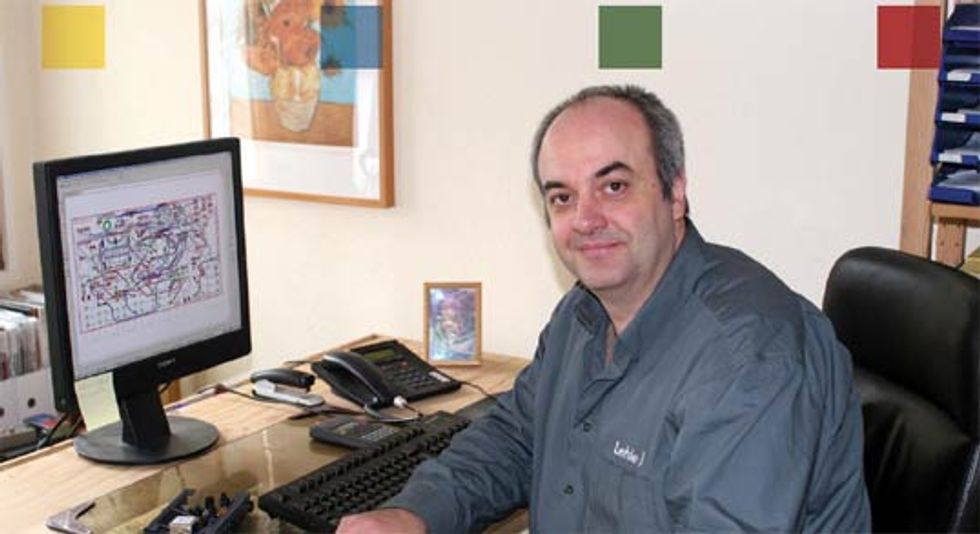 |
| Burhard G Lehle, the man behind the switchers |
The brightly colored boxes with the mushroom- shaped footswitches popped onto the scene a while back, offering up Teutonic quality and innovation along with a difficult to pronounce name. Having scored U.S. distribution last year with Dana B. Goods, Lehle-branded boxes (pronounced lee-la) have found their way onto quite a few pedalboards stateside in a short amount of time, many of which belong to artists notorious for their search for the ultimate tone. Figuring these guitarists were onto something, our own intrepid Dirk Wacker tracked down Burkhard G. Lehle to ask, “Dude, what's up with those switches?"
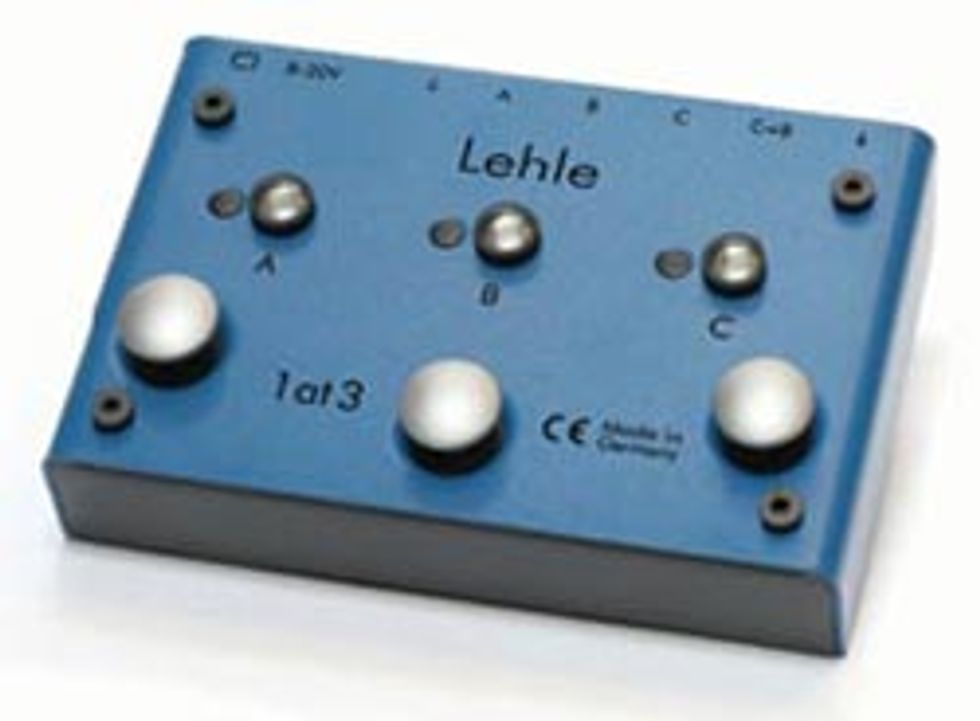 |
|
|
How did you end up specializing in switching solutions?
It all started one day when a customer came into my shop and asked for a special switching solution. I'm always open-minded to new things, so I started to investigate and I soon realized that there were no practical solutions. Due to the void in the market, I built two prototypes and showed them to some exhibitors at the Musikmesse in Frankfurt, Germany. When I returned home, I had several orders for my switcher. My first prototypes were built into the standard Hammond die cast cases, using standard mechanical switches. As demand increased, I developed my first generation of switchers in 2001. These switchers had the bigger, mushroom-shaped knobs and the indestructible switching matrix. These raised a lot of international interest; that's how it all started.
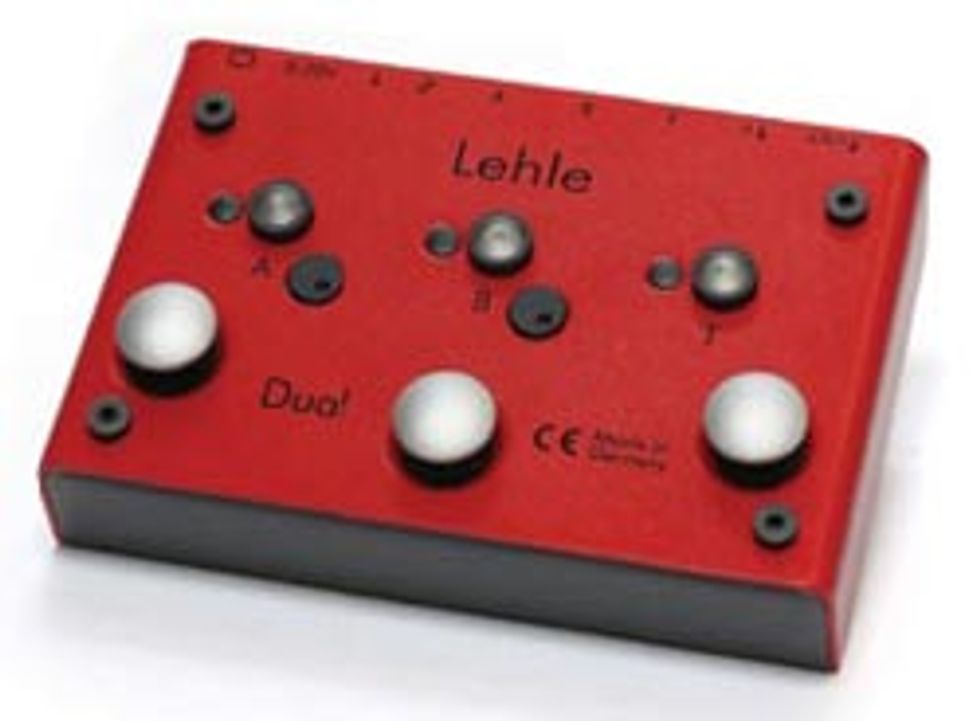 |
|
|
What sets your switchers apart?
The special thing about my switchers is the design and the exclusive use of relays and switches with gold-plated contacts. My pride and joy is the Hi-Z transformer that I developed, which is used in the Dual SGoS, Little Dual and the P-Split. I really believe that it's important to keep the individual interaction of the guitar, amp, playing style and the cable alive, even when you need to switch. The signal that comes out of a typical guitar or bass is so weak that a crappy cable or cheap contact materials can noticeably ruin your tone. To switch such weak signals without any tone loss, you need very special contact materials and a special design. Nothing beats gold-plated contacts for switches and relays. This is the only guaranteed way for switching weak signals without any degeneration.
In general, my switchers are passive, without any semiconductors in the signal path. The sound of a guitar and bass is created by the interaction between the weak instrument signal and the amp's sensitive input stage. With an active buffer, you can dramatically change the sound and feel of a guitar. Buffers and other active elements can be very useful and sound good, but in my opinion, they should not be involved in any switching process.
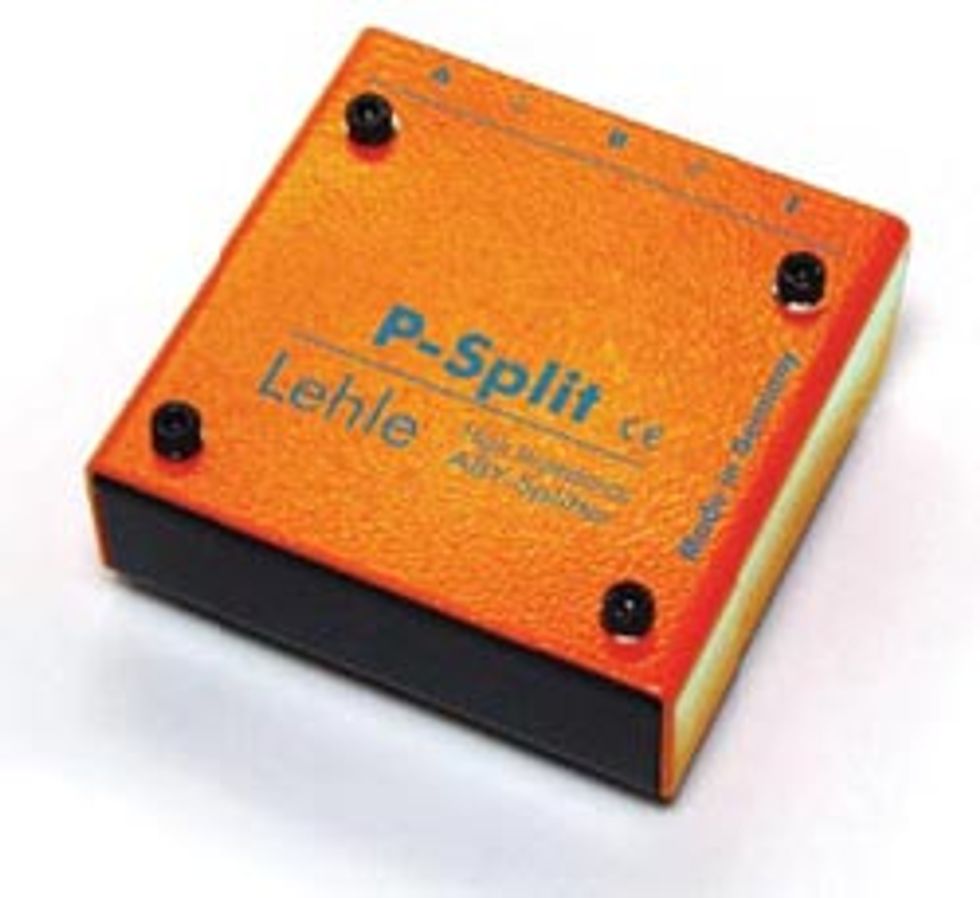
I developed the LTHZ transformer because when you are routing a guitar signal to two amps, you will typically have two problems: ground loops, which are especially annoying when using overdrive; and phase inversion, possibly causing a thinner sound. Both problems can be cured by using a transformer. Standard transformers are not built for guitar signals; even the most expensive models will change your tone noticeably. A guitar pickup isn't like a mic, with even bass, mids and highs. The typical electric guitar sound is the product of the resonant frequency in the mids of the pups in combination with the guitar's electronics, your cable and the input stage of the amp. When you use a standard transformer together with a guitar signal, you will shift this mid peak towards the lower frequencies, resulting in a completely different sound, often perceived as a loss in high frequencies. Strong signal sources like active outputs from a keyboard don't have any characteristic peaks and a standard transformer will not change the sound noticeably. A guitar signal is a much weaker signal, comparatively, while its input impedance is much higher than any line-level input.
You can use this effect to build a low-cost, A/B/Y box. You only have to boost the signal with a small active preamp, then you can use any standard transformer afterwards. This will get rid of the phase and ground problems we talked about, but this way will also destroy the interaction between the guitar and the amp. The best thing to do is to use a transformer that keeps this interaction untouched – that does not change the resonant peaks of the pickup in combination with the amp. Because there was no manufacturer producing such a transformer, I developed my own, starting from scratch. This transformer, used inside the Dual SGoS, Little Dual and the P-Split II, has a very high impedance and leaves the guitar signal untouched. The typical input impedance of a guitar amp is around 1 Megohm. The native impedance of my transformer at 1kHz is approximately ten times higher. Because of this, the transformer will not influence the mid frequencies in any way. At the same time, the coil's DC resistance is very low while the coil inductance is very high. Because of this, the signal will not lose any volume. Coupled with a low-impedance source like a mixing console or a preamp output, it is possible to stay absolutely linear between 20Hz and 100kHz. I also sell my LTHZ transformer to audio and hi-fi manufacturers.
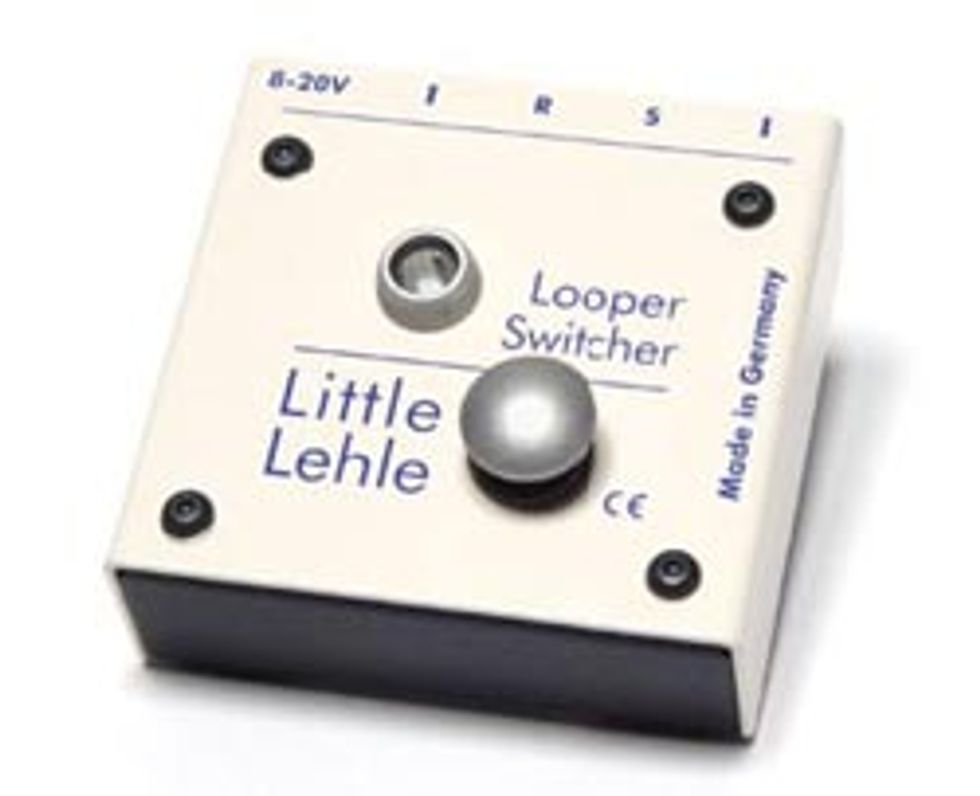
I worked two years on the new generation of my switchers. My main goal for developing these new switchers is easy; I wanted to develop the best switchers ever. The new design of the switchers was developed by two young and very talented industrial designers, Busse and Medugorac. I designed the first generation, but my main work is engineering, so I decided to let these two guys do the design work for the new generation of switchers. I think this was a good decision because I'm pretty sure we will hear their names again in the future – they did a really fantastic job.
From a technical point of view, the first version of my D-Loop, with its programmable and MIDI functions was the first product in the new direction of my switchers. Besides some new helpful features, like the tuner-out of the Dual SGoS or the controllable buffer stage of the new D-Loop, the main difference between the first and second generation is the network ability.
A lot of customers asked me for bigger solutions for more than two amps or two loops. Building bigger switchers with more loops would be one way to go, but I think it's much better to connect the loopers to build a complex switching matrix.
For example, you start with two effects chains connected to two loops with the D-Loop SGoS. You can change the loops or bypass all the loops with only one step. When you need additional loops because of more effects or changing effects combinations, you can keep your old one and use an additional D-Loop SGoS connected to the first one with a standard stereo patch cable to build a network. Now, when you step on one switcher, the other one will follow, while all the possible combinations are freely programmable – you can even connect a third switcher. The main idea behind this new concept is switching everything with a single step. The complete communication is realized using the MIDI program change standard, so you can also connect the switchers to any other MIDI device.
Lehle has an impressive roster of users – guitarists like Peter Stroud and Carl Verheyen. Have any artists helped develop Lehle products? What is the design process for a new pedal?
All Lehle products are based on customer requests. Most of the requests are coming from less popular musicians, but I treat them the same as if they were famous rockstars. When several musicians are longing for the same product, and it fits my product line, I will release it. There are also well known artists like Carl Verheyen who helped to develop a product with their input and ideas. The tuner-out of the Dual SGoS, as well as the fourth mode (aka “Carl Verheyen-mode") of this box are good examples of this. Carl was one of the better-known guitarists who used the Dual on an everyday basis. He wanted an additional tuner-out and a preset mode from standard A/B boxes – one switch is for A or B, another one for A and B and the third is for the tuner. I built this as a custom version for Carl, then started receiving a lot of requests for this setup. I did a redesign of the old Dual to implement those features and the Dual SGoS has been one of our best sellers ever since.
Not long ago, I met Joe Bonamassa in Bochum, Germany. He has been using my 1@3 switchers on his pedalboard since 2001 and stated that this is the only switcher that is 100 percent transparent, without any tone coloration. I brought him a new 1@3 SGoS switcher that he tested right before his gig. I think that Joe is a real sound purist, recognizing even the smallest differences in tone – I'm happy that I had the chance to talk about tone and switchers with him.
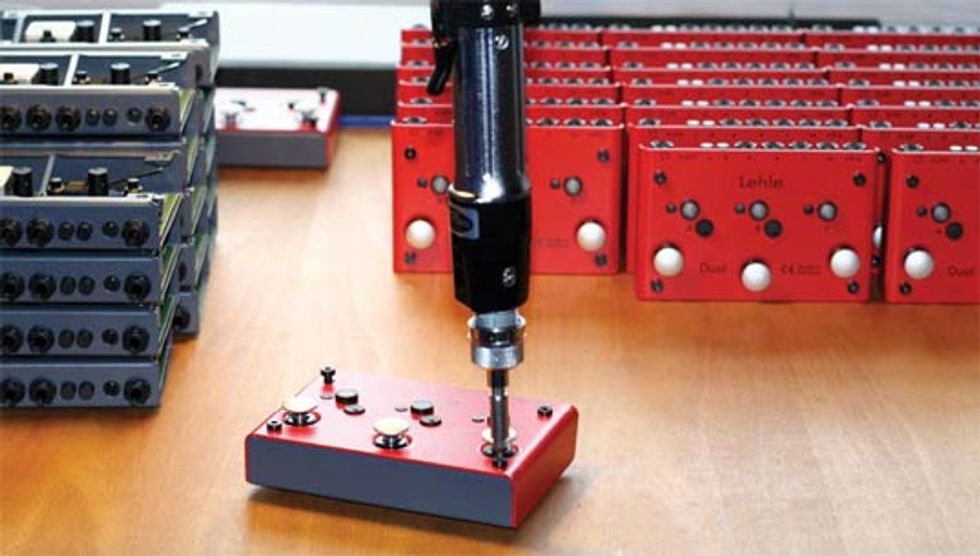 |
|
|
Where did the “mushroom" footswitches come from?
I soldered my first switchers by hand and I connected the three switches to the PCB with cables. This method was not very production friendly and also notorious for malfunctioning. Standard footswitches have a very limited lifetime, and to be honest, I really don't like the design. Based on my experiences repairing amps and stompboxes I knew that I also didn't want a solution where the switches are soldered directly to the circuit board because of the risk of a broken or damaged PCB. Production costs and the risk of malfunctions are low with this design, but what can you do with a switcher that's unreliable?
While looking for a suitable solution, I visited an electronics tradeshow in Munich, and found aluminium knobs with a plastic bearing, engaging a micro tactile switch inside the case! Naturally, this is not my invention; the method of “indirect engaging of a switch" has been well known for industrial applications for many years, but the design is especially developed for the needs of musicians. All of the components – the aluminium mushroom knob, the bearing bushing, the retaining spring, the microswitch on the PCB and the relays – are designed for at least two million switching actions. With a little luck, a standard footswitch will survive 20,000 switching actions. I think the best proof that our switchers are very reliable is the 1@3 that Joe Bonamassa uses – it has spent seven years on the road without any problems. With the Little Lehle, I released a second system that works with the same knob, but inside there is no microswitch. Instead, a specially shaped flexible sheet of metal is engaging a high quality slide switch with gold contacts. I use this system in the Little Lehle, the Little Dual and soon in the Lehle Parallel-L.
Tell us more about the Little Lehle – what was the idea behind the design?
The Little Lehle is our beginner's model, offering the same quality in sound and construction as our big switchers. The Little Lehle switches a stereo stompbox or as a symmetrical signal into the signal path. You can also use it as a stereo A/B box for two amps or two instruments. The Little Lehle is loaded with two slide switches in parallel with gold contacts, which delivers eight individual switching stages. Because of this, you can switch a signal in stereo or symmetrical while also switching the grounds. Of course, it can still function as a mono switcher. When you are using the Little Lehle as an A/B box for one guitar and two amps, it's impossible to get any ground loops. The lifetime of the gold-contacted slide switches is drastically expanded compared to standard footswitches. Also, they will not produce the typical popping noises that often occur with standard switches. Since it was released, the Little Lehle is my top seller and my goal is to equip every guitarist with one.
This summer I will release the Little Lehle II, offering the same new design as my big switchers.
What else is on the horizon for Lehle?
The Sunday Driver is coming next. It's a clean boost with two boost options; the “driver mode" where the box is working as a linear line driver and the “Sunday mode" where it works like a buffer, very similar to the D-Loop buffer function. Next, I plan to release the little line-mixers Parallel M and Parallel L, which will convert a serial effects loop to parallel. Another big project is the design of several channel-switchers for amps that can be connected to my SGoSseries products, working as a network.
Lehle







![Rig Rundown: Russian Circles’ Mike Sullivan [2025]](https://www.premierguitar.com/media-library/youtube.jpg?id=62303631&width=1245&height=700&quality=70&coordinates=0%2C0%2C0%2C0)

















